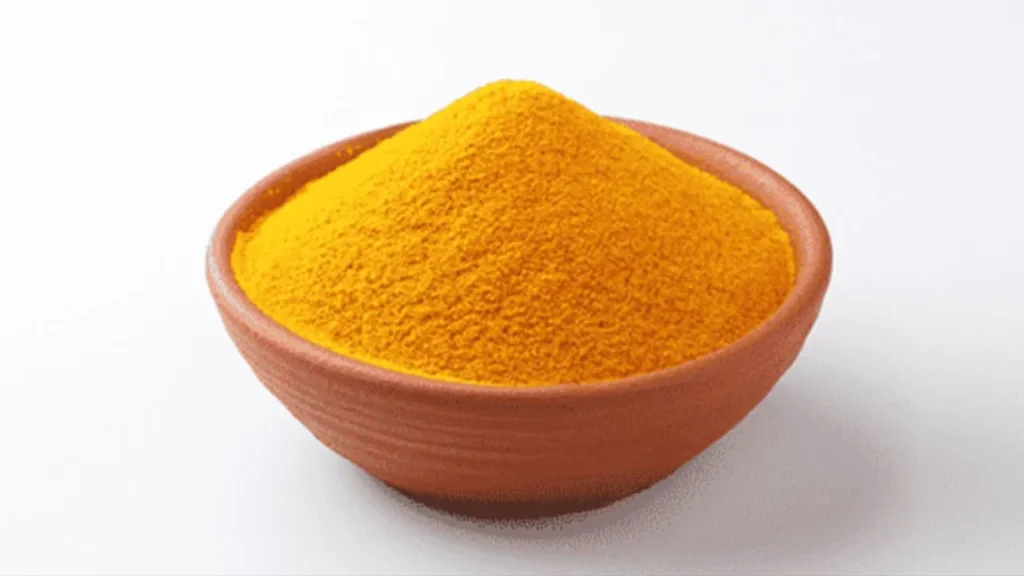When it comes to natural skincare, few ingredients have stood the test of time quite like turmeric. For centuries, this golden spice has been hailed for its healing properties and ability to enhance beauty, particularly in skincare.
But not all turmeric is created equal. So, which turmeric is best for your skin, and why does it work so well? Let’s dive into the world of turmeric and uncover the best type for that radiant, glowing complexion you’ve always dreamed of!
What Makes Turmeric a Skincare Superstar?
Turmeric is packed with curcumin, a powerful antioxidant and anti-inflammatory compound. This makes turmeric an effective solution for various skin issues like acne, dark spots, dullness, and signs of aging. It’s also well-known for its ability to soothe the skin, fight free radicals, and promote even skin tone.
But with different varieties of turmeric available, it can be overwhelming to know which one will work best for your skin.
Types of Turmeric for Skin
There are a few varieties of turmeric, each with its own unique properties. Let’s explore the different types and find out which one might be best suited for your skincare needs.
1. Kasturi Turmeric (Curcuma Aromatica)/ Wild Turmeric

When it comes to skincare, Kasturi Turmeric (also known as Wild Turmeric) is the superstar. Unlike regular turmeric, Kasturi turmeric is non-staining, which makes it ideal for topical use. It’s widely used in beauty treatments due to its antibacterial, antifungal, and skin-brightening properties.
- Best for: Brightening the skin, reducing acne scars, and improving complexion.
- Why it’s good: Kasturi turmeric is particularly beneficial for oily and acne-prone skin as it reduces excess oil production and prevents breakouts.
- How to use: Mix Kasturi turmeric with milk or yogurt to create a paste, apply it to your face, and leave it on for 15-20 minutes before washing off.
Note: Kasturi turmeric is not typically consumed internally and is specifically used for cosmetic purposes.
“For the best results, consider using this high-quality Kasturi turmeric available on Amazon. It’s non-staining and specifically crafted for cosmetic use.“
2. Curcuma Longa (Common Turmeric)

This is the most commonly available turmeric, used in cooking and for medicinal purposes. It’s rich in curcumin, which has strong anti-inflammatory and antioxidant properties. While it’s a powerful ingredient for both internal and external use, it can stain the skin due to its vibrant yellow color.
- Best for: Anti-aging treatments, reducing inflammation, and soothing irritated skin.
- Why it’s good: Its high curcumin content makes it effective in fighting free radicals, which can damage skin cells and lead to signs of aging like wrinkles and fine lines.
- How to use: To reduce staining, mix it with other ingredients like gram flour, honey, or milk, and apply as a face mask.
“If you’re looking for an all-purpose turmeric that can be used both in cooking and skincare, check out this organic Curcuma Longa powder for high curcumin content.“
3. White Turmeric (Zedoary Turmeric)

White turmeric is another lesser-known variety that has skincare benefits. It has a lighter color, so it doesn’t stain the skin like the common yellow turmeric. It has antiseptic and anti-inflammatory properties and is used for treating skin infections and minor cuts or wounds.
- Best for: Healing skin infections, soothing rashes, and managing minor skin irritations.
- Why it’s good: White turmeric is gentle on the skin and has a cooling effect, making it ideal for sensitive skin prone to redness and irritation.
- How to use: Create a paste by mixing this top-rated white turmeric powder with water or aloe vera gel and apply it to the affected area for calming relief.
4. Organic Turmeric Powder

If you’re looking for a versatile turmeric that can be used both internally and externally, organic turmeric powder is your go-to. Organic turmeric ensures that there are no harmful pesticides or chemicals that can irritate your skin.
- Best for: Overall skin health, treating pigmentation, and soothing skin.
- Why it’s good: Organic turmeric is pure and has higher levels of curcumin, making it potent in fighting hyperpigmentation and promoting an even skin tone.
- How to use: You can incorporate organic turmeric into your diet to boost skin health from within and use it externally in homemade face masks.
Benefits of Using Turmeric for Skin
No matter which type of turmeric you choose, the benefits of adding this golden spice to your skincare routine are numerous:
- Anti-inflammatory: Reduces redness and irritation, particularly helpful for conditions like eczema and rosacea.
- Antioxidant: Fights free radicals and slows down signs of aging like wrinkles and fine lines.
- Brightening: Turmeric can help in achieving a more radiant complexion and reduce dark spots or hyperpigmentation.
- Acne-fighting: Due to its antibacterial properties, turmeric is excellent for oily and acne-prone skin, helping to prevent breakouts and clear acne scars.
How to Use Turmeric Safely for Your Skin
While turmeric offers fantastic benefits, it’s important to use it properly to avoid irritation or staining. Here are some tips:
- Patch test first: Before applying any turmeric mask, do a patch test on your wrist or behind your ear to check for any allergic reactions.
- Use with gentle ingredients: Mixing turmeric with soothing agents like yogurt, honey, or milk can help reduce its staining effect and add more nourishment to your skin.
- Avoid overuse: Using turmeric too often can cause yellow staining on the skin, so limit usage to 2-3 times a week.
DIY Turmeric Face Mask Recipe
Here’s an easy turmeric face mask recipe you can try at home for glowing skin:
- Ingredients:
- 1 teaspoon Kasturi turmeric
- 2 tablespoons plain yogurt or milk
- 1 teaspoon honey
- Instructions:
- Mix all the ingredients together to form a smooth paste.
- Apply the paste evenly to your face and leave it on for 15-20 minutes.
- Rinse off with lukewarm water and pat dry.
This mask will leave your skin feeling fresh, glowing, and rejuvenated.
Conclusion: Choose the Right Turmeric for Your Skin
Turmeric is a versatile and powerful ingredient that can work wonders for your skin, but choosing the right variety is key. Kasturi turmeric is excellent for brightening and acne-prone skin, while Curcuma longa offers potent anti-aging benefits. For those with sensitive skin, white turmeric is a gentle yet effective option. Always opt for organic turmeric for the purest benefits.
Incorporating turmeric into your skincare routine can lead to a radiant, youthful complexion. So why not give this ancient beauty secret a try and experience the glow for yourself?
Tip: Want to unlock even more skin benefits? Pair your turmeric routine with a healthy lifestyle, and you’ll see the glow radiate from within!
FAQ
Are wild turmeric and amba haldi same?
Yes, wild turmeric and amba haldi refer to the same plant. Scientifically known as Curcuma aromatica, this species of turmeric is different from the common turmeric (Curcuma longa) used in cooking.
Wild turmeric or amba haldi is primarily used in Ayurvedic medicine, beauty treatments, and skincare due to its antimicrobial, anti-inflammatory, and antioxidant properties. Unlike common turmeric, it is not typically used for culinary purposes because of its more bitter taste.
Amba haldi is especially popular in India for making face masks and skin treatments.
What is another name for wild turmeric?
Another name for wild turmeric is Kasturi Manjal (or Curcuma aromatica). It is often referred to as Musk Turmeric due to its distinct, pleasant fragrance. Wild turmeric is commonly used in traditional medicine and beauty treatments, especially in Ayurveda, and is different from the regular culinary turmeric (Curcuma longa).
Can wild turmeric be eaten?
Wild turmeric (Curcuma aromatica) is not typically consumed as food in the same way as common turmeric (Curcuma longa), which is used as a spice. Wild turmeric is mainly used in traditional medicine and beauty treatments, especially in Ayurveda, for its skin benefits and medicinal properties.
While wild turmeric may have health benefits, it is not commonly eaten due to its different chemical composition, stronger flavor, and potential bitterness. It is often used topically for skin care, in face masks, and as a remedy for skin conditions.
If you’re considering consuming wild turmeric, it’s important to consult a healthcare professional or an Ayurvedic expert to ensure it’s safe for your specific needs.
“This article contains affiliate links. If you purchase through these links, I may earn a small commission at no additional cost to you.“
More from Ayurveda Sci.

